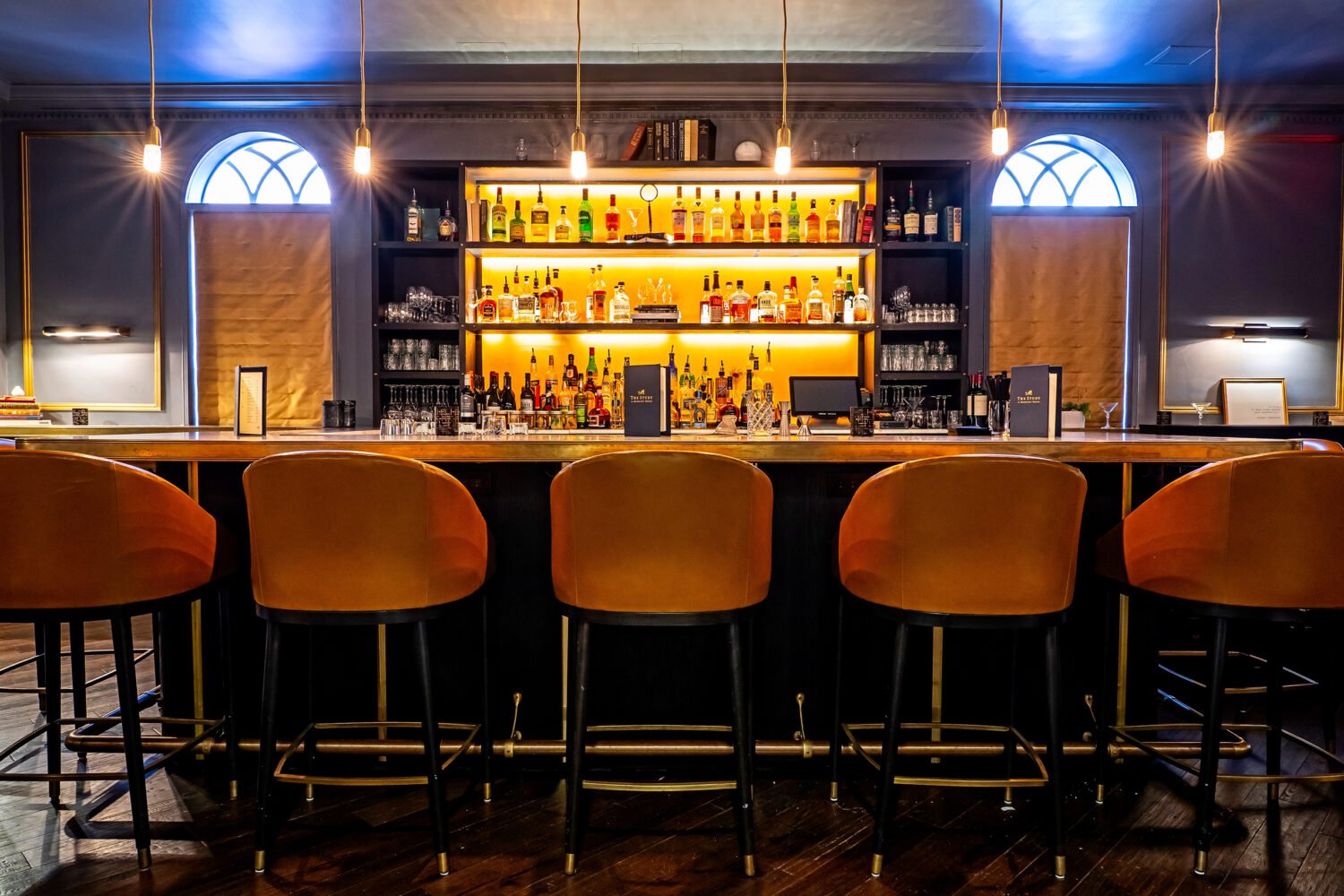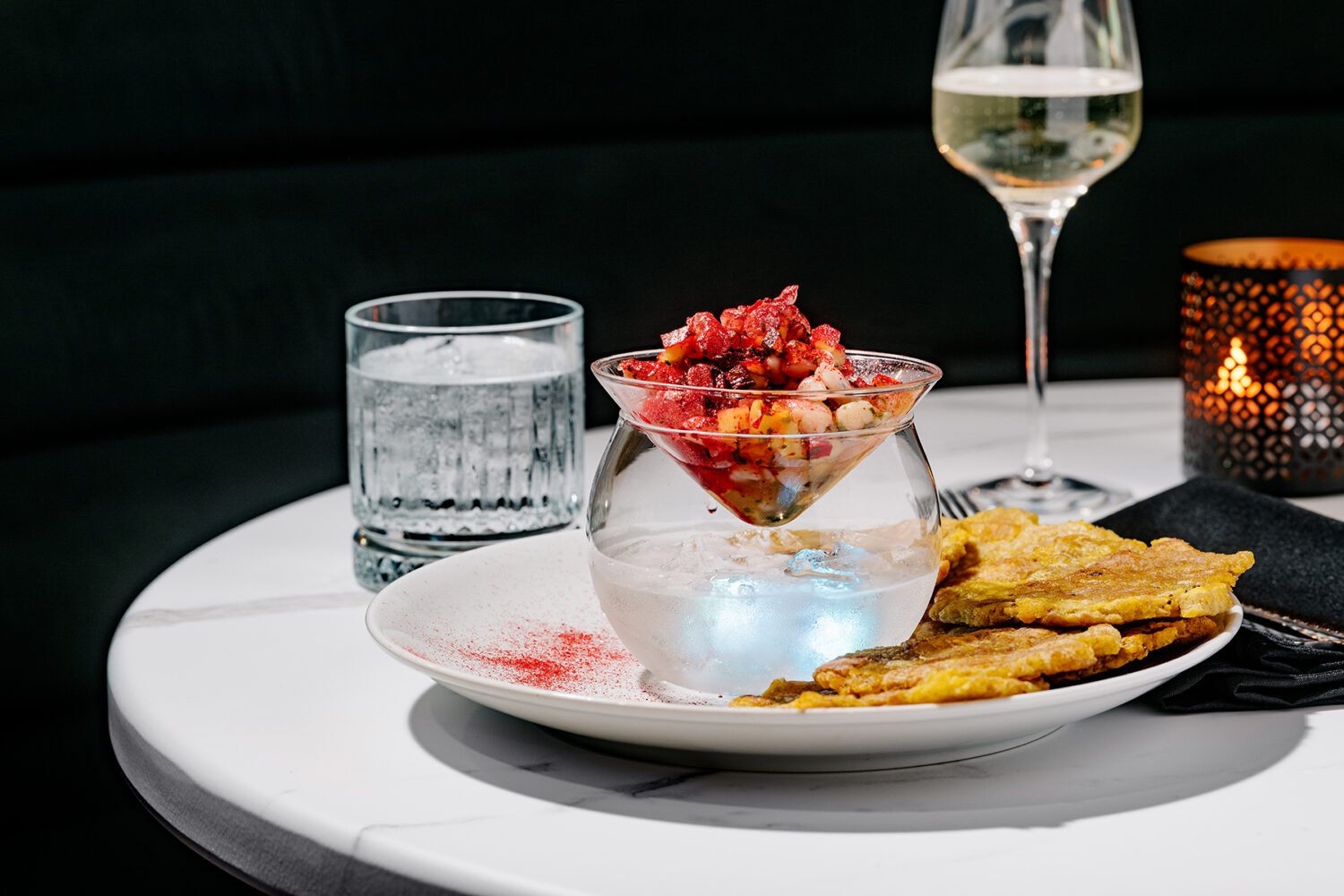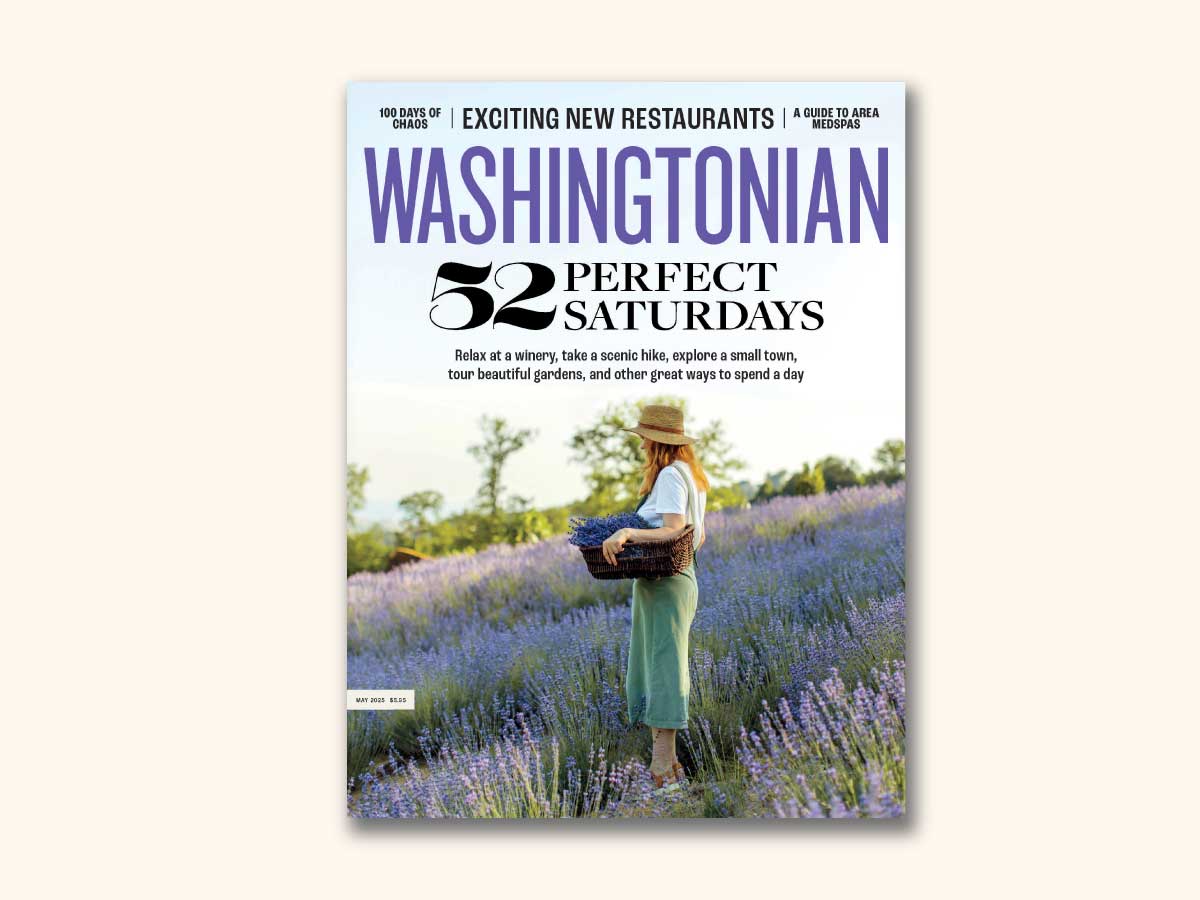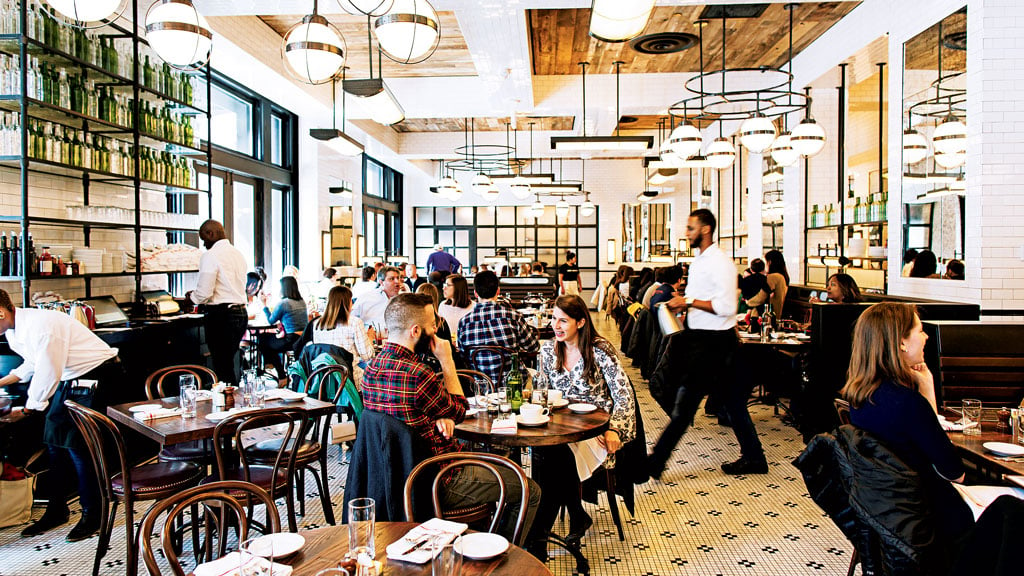Two years ago, Morou Ouattara was running his Old Town Alexandria restaurant, Farrah Olivia, successfully introducing things like mint pearls and bacon powder to the neighborhood. Maybe you caught him on the Food Network, battling Bobby Flay in Iron Chef’s Kitchen Stadium. Or on the front page of the New York Times dining section. He preferred to go by his first name only, à la Madonna.
But in 2009 Farrah Olivia abruptly closed and the Ivory Coast native slipped into the background, taking consulting jobs and launching a small spice-importing business.
Now he’s reopened the restaurant in a less charming location: the back dining room of Kora, the Italian/Mediterranean place he recently took over as chef in Crystal City. The space doesn’t have a promising history. Roberto Donna couldn’t make his Bebo Trattoria work in the cavernous room, and neither could Oyamel, now in DC’s Penn Quarter.
Ouattara’s setup is odd: In the front room you’ll find chicken Parmesan and heaping plates of lasagna; go in the back—to a purple-draped space originally meant to be a private dining room—and you get shocked tuna with olive caviar. Ouattara is hoping to lure old fans with a near copy of the original Farrah Olivia’s menu. But that brings up another thorn: Unless you’re Ferran Adrià or Grant Achatz or José Andrés, the whole food-as-science-project thing feels a bit dated.
Some dishes might make you think otherwise—the shocked tuna, for one. A cut of ahi is boiled for 15 seconds, then “shocked” in cold red wine and soy sauce and seared. The plate is artfully accented with dabs of Sriracha mayonnaise, pickled apples, and sardine powder. More subtle but also delicious is a seared scallop set over tapioca and a “milk” made from toasted melon seeds; the dish gets a hit of saltiness from bacon powder and bacon crumbles.
It took me a couple of rounds of dishes to figure out that you have to play with your food here—not “eat it in one bite” as you might be told to do at Andrés’s Minibar. An appetizer of beef tartare is so tiny and sculptured that it seems wrong to make a mess of it. But mixing up the little accents of berbere sauce, shallot powder, and a yolk-shaped round of honey mustard makes it a standout.
The same goes for a nice but boring cut of filet mignon: Get a little foie gras butter and roasted-grape wine on the fork and it becomes transcendent. Dragging a toothpick-lanced piece of apple through caramel and peanut-butter powder makes for a wonderful bite-size riff on a carnival treat.
But no amount of fiddling couldn’t fix a few of the dishes: an off-tasting roasted quail stuffed with grainy cornbread; dry goat-cheese gnudi; and stiff grits with candy-sweet cabbage. Consistency also has been an issue. One night that shocked tuna tasted as if it had been made by a novice experimenting with a Morou cookbook; another time it was one of the best things on the table.
There’s no question Ouattara is a talent. His spicing is creative, and he’s always been terrific with soups, which he’s not showing off yet here. He’s on the right track, spending more time in the kitchen than with the press. (The soft-spoken chef never came across as the fame-seeking type anyway.) But it’s one thing to replicate a menu of old hits—and another to replicate old success.
This article appears in the June 2011 issue of The Washingtonian.










